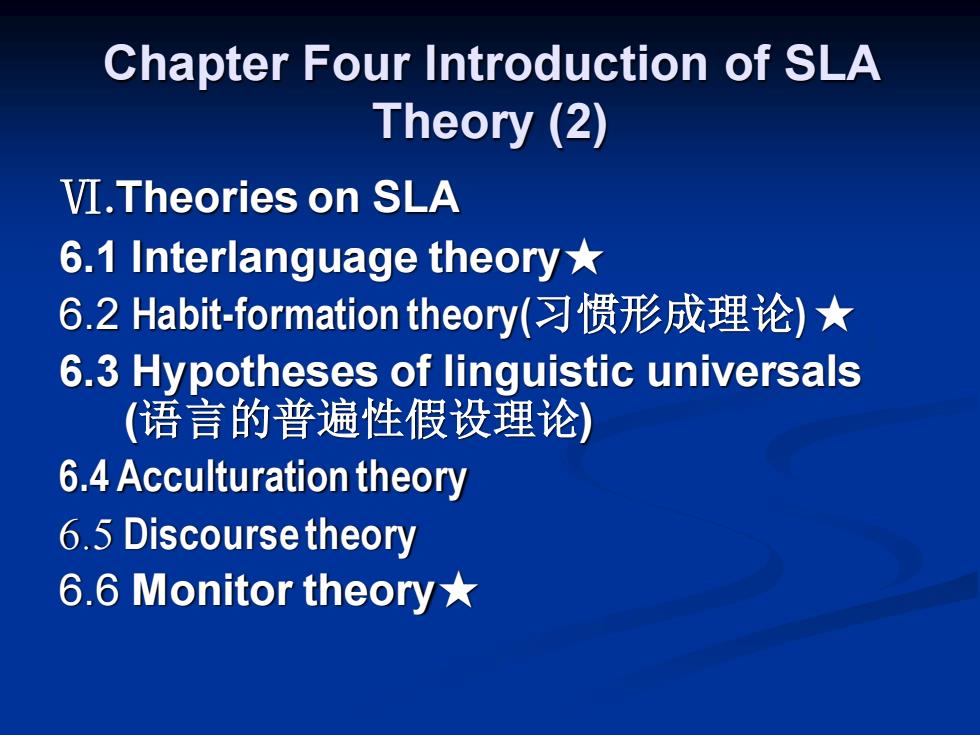
Chapter Four Introduction of SLA Theory (2) VI.Theories on SLA 6.1 Interlanguage theory 6.2 Habit-.formation theory(习惯形成理论)★ 6.3 Hypotheses of linguistic universals (语言的普遍性假设理论) 6.4 Acculturation theory 6.5 Discourse theory 6.6 Monitor theory★
Chapter Four Introduction of SLA Theory (2) Ⅵ.Theories on SLA 6.1 Interlanguage theory★ 6.2 Habit-formation theory(习惯形成理论) ★ 6.3 Hypotheses of linguistic universals (语言的普遍性假设理论) 6.4 Acculturation theory 6.5 Discourse theory 6.6 Monitor theory★
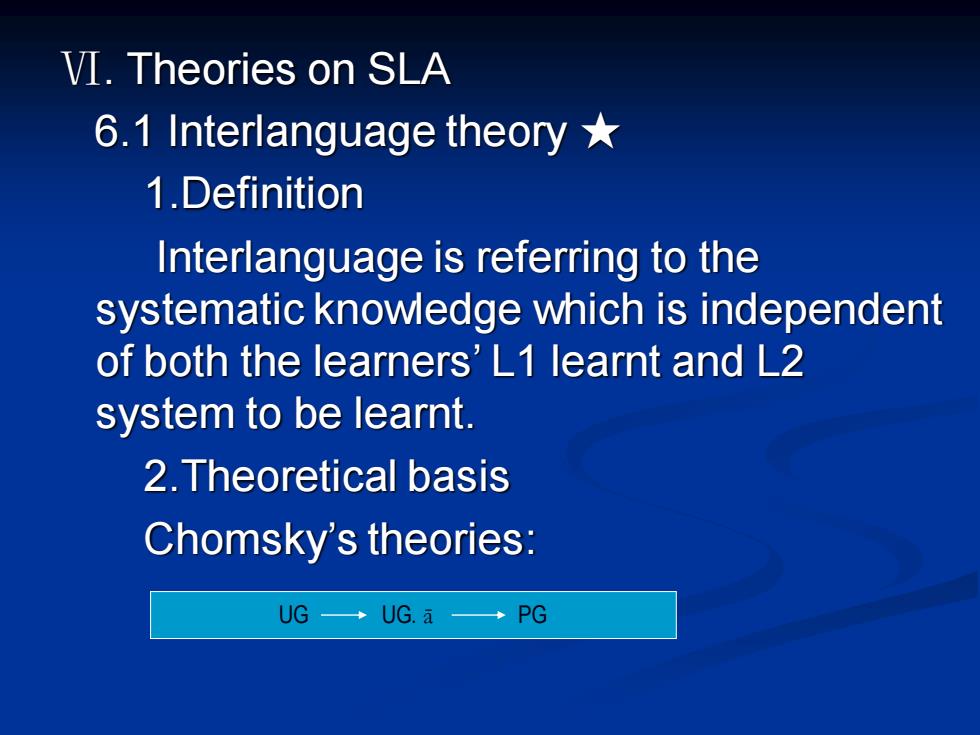
VI.Theories on SLA 6.1 Interlanguage theory 1.Definition Interlanguage is referring to the systematic knowledge which is independent of both the learners'L1 learnt and L2 system to be learnt. 2.Theoretical basis Chomsky's theories: UG→UG.a→PG
Ⅵ. Theories on SLA 6.1 Interlanguage theory ★ 1.Definition Interlanguage is referring to the systematic knowledge which is independent of both the learners’ L1 learnt and L2 system to be learnt. 2.Theoretical basis Chomsky’s theories: UG UG. ā PG
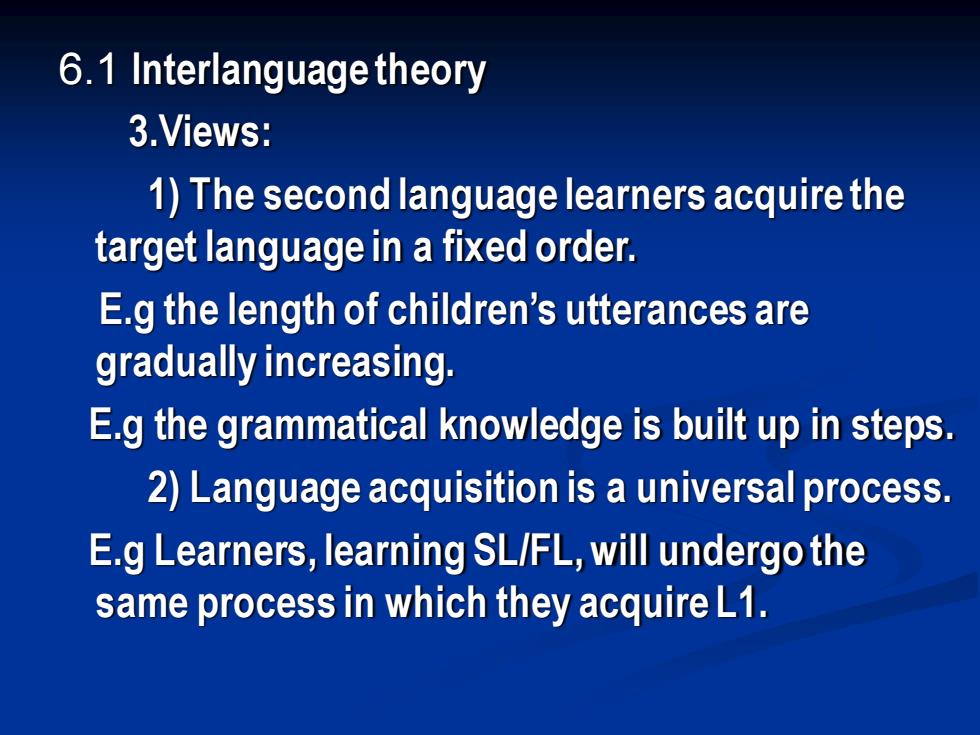
6.1 Interlanguage theory 3.Views: 1)The second language learners acquire the target language in a fixed order. E.g the length of children's utterances are gradually increasing. E.g the grammatical knowledge is built up in steps. 2)Language acquisition is a universal process. E.g Learners,learning SL/FL,will undergo the same process in which they acquire L1
6.1 Interlanguage theory 3.Views: 1) The second language learners acquire the target language in a fixed order. E.g the length of children’s utterances are gradually increasing. E.g the grammatical knowledge is built up in steps. 2) Language acquisition is a universal process. E.g Learners, learning SL/FL, will undergo the same process in which they acquire L1
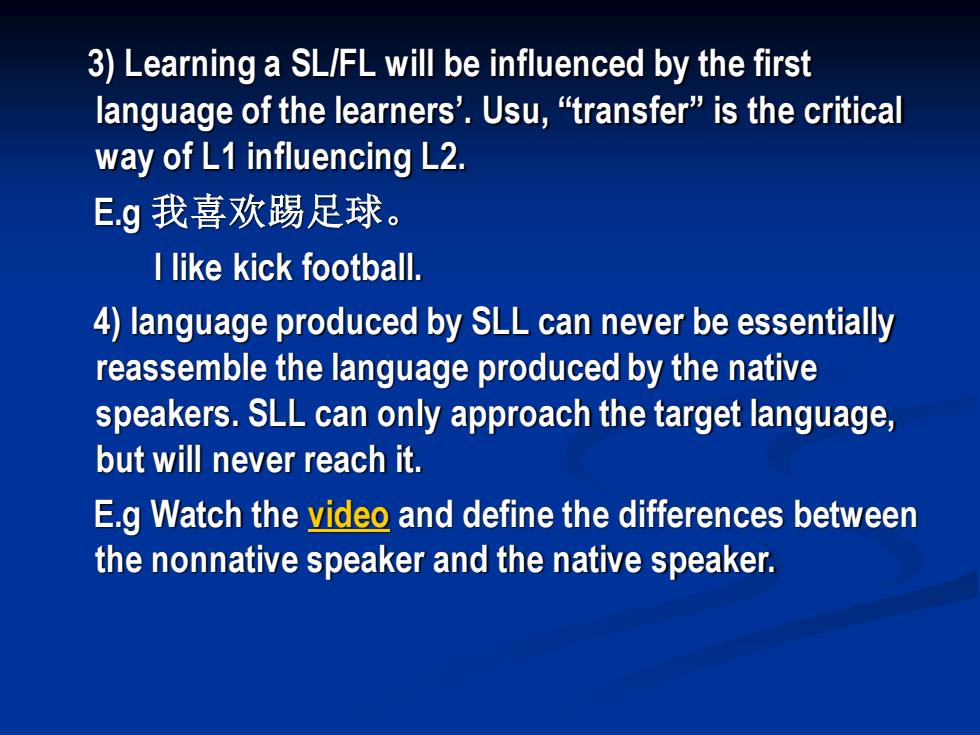
3)Learning a SL/FL will be influenced by the first language of the learners'.Usu,"transfer"is the critical way of L1 influencing L2. E.g我喜欢踢足球。 I like kick football. 4)language produced by SLL can never be essentially reassemble the language produced by the native speakers.SLL can only approach the target language, but will never reach it. E.g Watch the video and define the differences between the nonnative speaker and the native speaker
3) Learning a SL/FL will be influenced by the first language of the learners’. Usu, “transfer” is the critical way of L1 influencing L2. E.g 我喜欢踢足球。 I like kick football. 4) language produced by SLL can never be essentially reassemble the language produced by the native speakers. SLL can only approach the target language, but will never reach it. E.g Watch the video and define the differences between the nonnative speaker and the native speaker
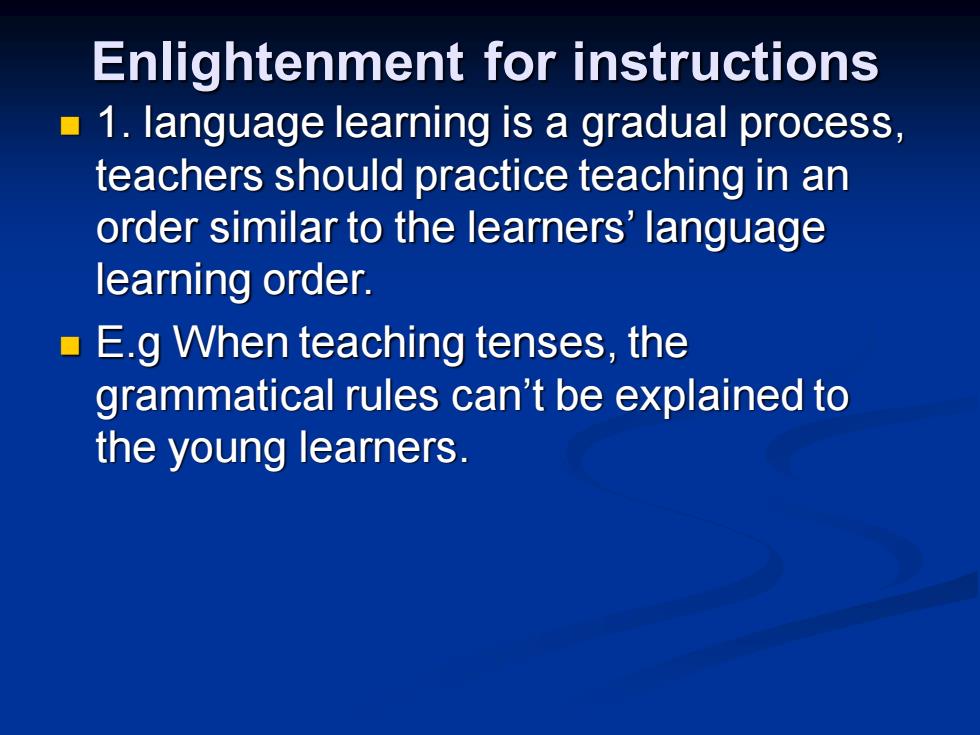
Enlightenment for instructions 1.language learning is a gradual process, teachers should practice teaching in an order similar to the learners'language learning order. E.g When teaching tenses,the grammatical rules can't be explained to the young learners
Enlightenment for instructions ◼ 1. language learning is a gradual process, teachers should practice teaching in an order similar to the learners’ language learning order. ◼ E.g When teaching tenses, the grammatical rules can’t be explained to the young learners